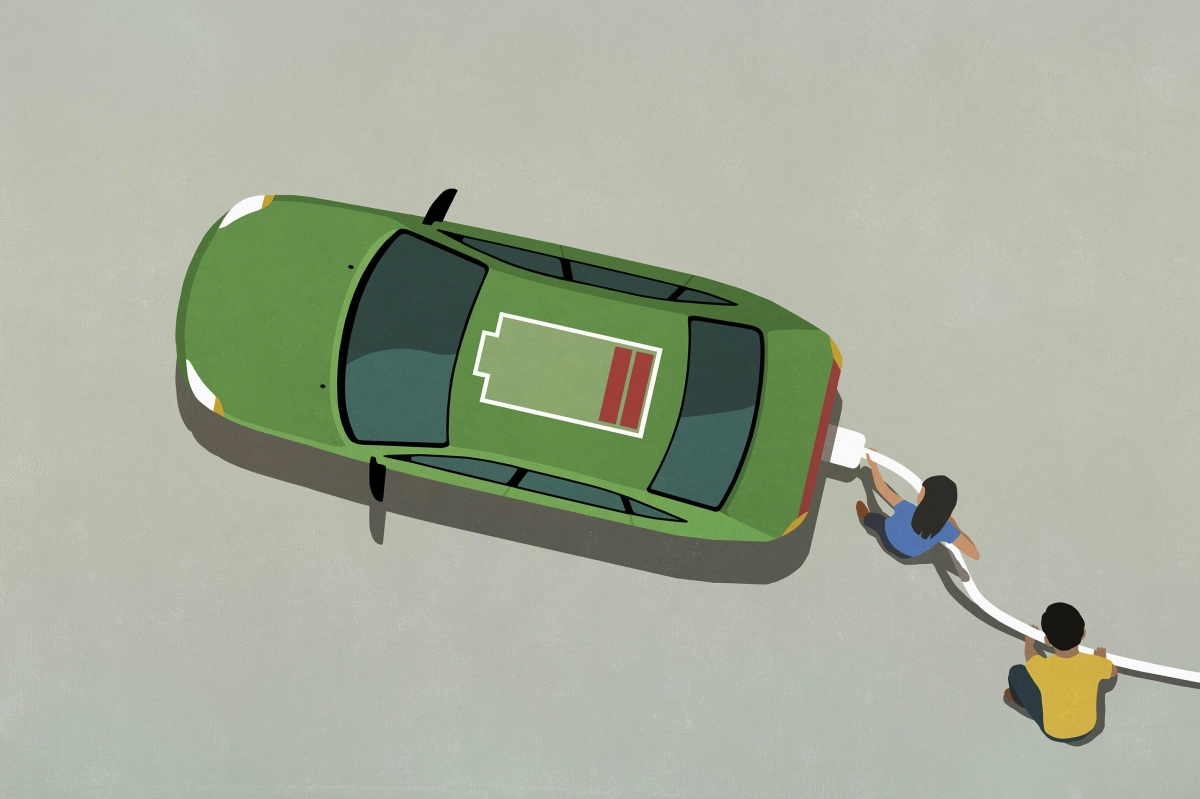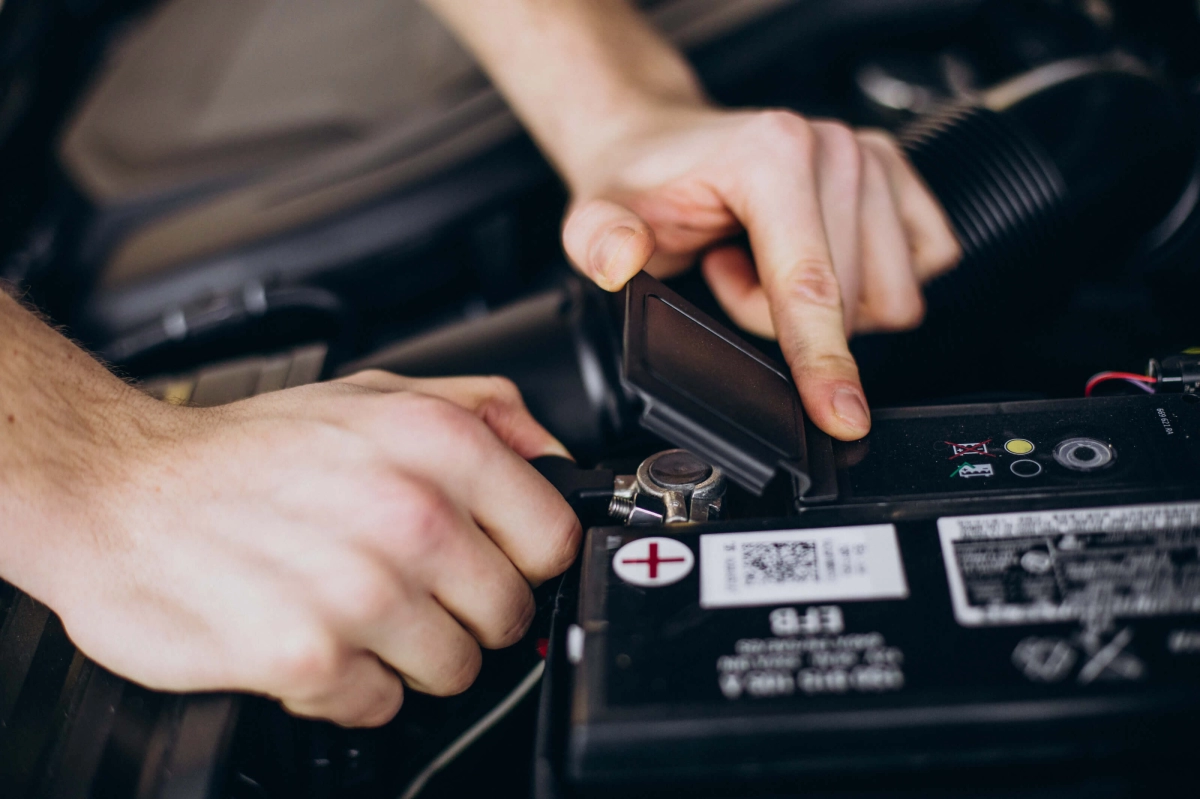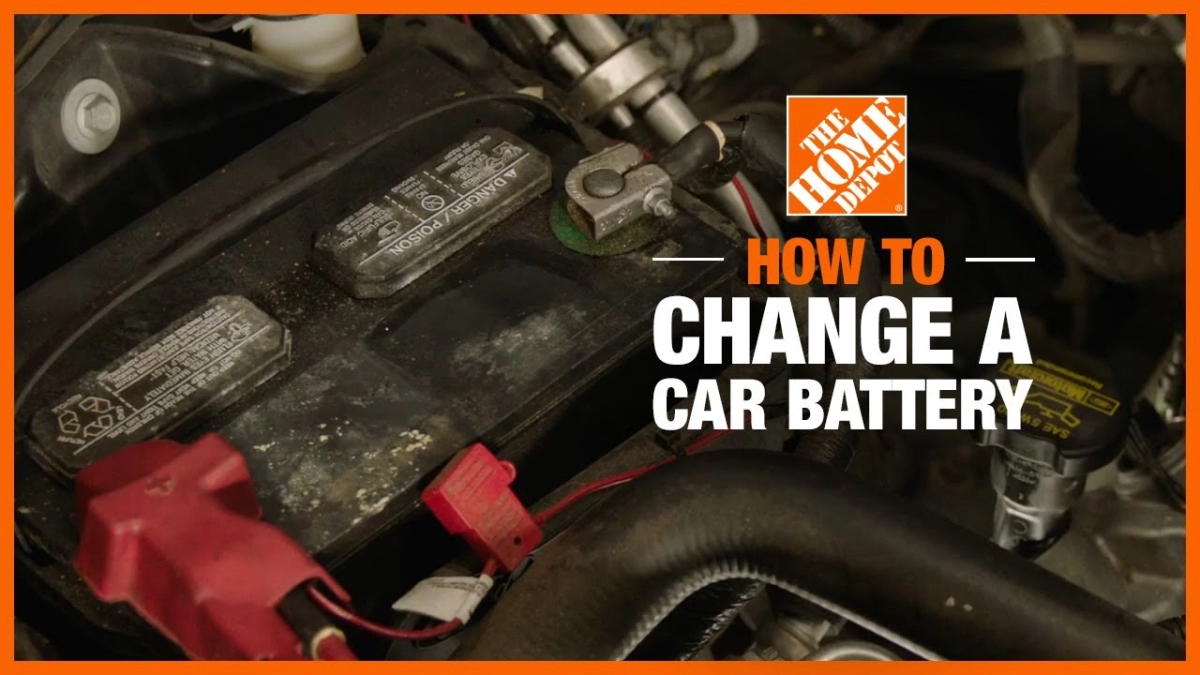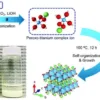Struggling with a dead lithium-ion battery? Don’t toss it out just yet! At li-ess, we’re here to help you revive your battery and save money with safe, practical solutions. Whether it’s a smartphone, laptop, or EV battery, our expert guide will walk you through how to repair a dead lithium-ion battery step-by-step. With proven techniques and safety tips, you’ll learn exactly what to do—and what to avoid—to get your device powered up again. Ready to bring your battery back to life? Let’s jump in!
Why Do Lithium-Ion Batteries Fail Common Causes and Symptoms
Lithium-ion batteries are everywhere—from smartphones to electric vehicles—but they don’t last forever. Understanding why lithium-ion batteries fail helps you spot issues early and decide if repair or replacement is the best option.
Common Causes of Battery Failure
-
Deep Discharge Below Safe Voltage
When a lithium-ion battery’s voltage falls too low (typically below 2.5 volts), it enters a deep discharge state. This can cause irreversible chemical changes inside the cells, leading to failure or making revival difficult.
-
Overcharging or Prolonged Charging
Charging beyond the recommended voltage or for too long stresses the battery and shortens its lifespan. Overcharging can trigger overheating and internal damage.
-
Aging and Cycle Degradation
After about 500 to 1200 charge cycles, lithium-ion cells gradually lose capacity and efficiency. This natural wear means your battery won’t hold a full charge and may fail sooner over time.
-
Exposure to Extreme Temperatures
Both excessive heat and freezing cold can degrade battery performance. High temperatures accelerate chemical breakdown, while cold can temporarily reduce capacity and cause permanent damage with repeated exposure.
-
Physical Damage or Manufacturing Defects
Drops, punctures, or flaws in the battery’s construction can lead to failure or even safety hazards like swelling and leaking.
Symptoms of a Dead Lithium-Ion Battery
Recognizing a dead battery early can help you avoid further damage or safety risks. Watch for these signs:
-
Device Won’t Power On or Charge
The most obvious sign your lithium-ion battery is failing or dead.
-
Rapid Discharge or Overheating
If your device loses charge quickly or becomes unusually hot during use, the battery may be compromised.
-
Swelling, Leaking, or Corrosion
These are serious safety red flags that mean the battery is damaged internally and should not be used or repaired at home.
By understanding these causes and symptoms related to deep discharge recovery and general battery care, you’ll be better prepared to diagnose issues and consider safe repair options like those supported by li-ess products and services.
Can You Revive a Dead Lithium-Ion Battery

When it comes to lithium-ion battery revival, knowing when it’s possible makes all the difference. Batteries that have deep discharged—meaning their voltage dropped below the safe limit (often below 2.5 volts)—can often be recovered if caught early. In these cases, the battery isn’t physically damaged; it just needs a slow, careful recharge to work properly again.
However, if the battery has physical damage, like swelling, leakage, or visible corrosion, the chances of a successful repair drop significantly. These issues usually mean internal components are compromised, making any kind of revival risky or outright unsafe.
Risks of Attempting Revival on Damaged or Swollen Batteries
Trying to restore a swollen or otherwise damaged lithium-ion battery can be dangerous. Damaged batteries can:
- Overheat unexpectedly
- Catch fire
- Leak harmful chemicals
Because of these risks, do not attempt to repair batteries showing signs of physical harm. It’s safer to dispose of them properly and get a new battery.
Not All Dead Batteries Can Be Fixed
Not every lithium-ion battery can be saved. If your battery fails due to aging, extensive cycle degradation, or serious internal faults, revival attempts won’t restore its original capacity or safety. In such cases, replacement is the best call.
If you’re unsure about your battery’s condition or the right steps to take, consider consulting professionals who specialize in battery repair and management systems. This helps avoid unsafe DIY fixes and extends the overall life of your devices responsibly.
Safety Precautions Before Attempting Lithium-Ion Battery Repairs
When dealing with lithium-ion battery revival or any type of battery repair, safety needs to be your top priority. Lithium-ion batteries can be volatile if handled incorrectly, so taking proper precautions is essential to avoid accidents.
Essential Safety Tips for Lithium-Ion Battery Repair
- Work in a well-ventilated area to prevent buildup of any hazardous gases if something goes wrong.
- Wear protective gear like safety glasses and gloves to protect yourself from leaks or sparks.
- Never attempt to repair swollen, leaking, or physically damaged batteries. These are serious red flags that the battery is unsafe and could catch fire or explode.
- Keep a fire extinguisher nearby, specifically one rated for electrical or lithium battery fires. This is crucial in case of emergencies.
- Use tools designed specifically for lithium-ion battery repair. Generic tools might cause shorts or damage sensitive parts.
Unsafe Methods to Avoid
- Do not freeze batteries in an attempt to bring them back to life. Extreme cold can cause internal damage.
- Avoid overcharging or forcing high current into a battery. This can lead to overheating and permanent damage.
- Never try shortcuts like jump-starting batteries without proper equipment or monitoring.
Trusted Equipment for Safe Repairs
For safe and reliable reviving of lithium-ion batteries, li-ess offers high quality battery chargers designed to work within safe voltage and current limits. These chargers help you carefully bring dead batteries back to life without risking damage or safety.
By following these safety precautions and using the right tools, you reduce risks when working on lithium-ion battery fixes and ensure your repair efforts have a better chance of success. Remember, a cautious approach protects both you and your device.
Step by Step Guide to Reviving a Lithium-Ion Battery
Step 1 Diagnose the Issue with Your Lithium-Ion Battery
Start by checking the battery voltage with a multimeter. A healthy lithium-ion battery should read between 3.7 and 4.2 volts. If the voltage is below 2.5 volts, that usually means the battery is deeply discharged and needs revival. Also, carefully inspect the battery for any physical damage like swelling, leaks, or corrosion. These signs often mean the battery is unsafe to repair.
Step 2 Clean Battery Terminals for Better Connection
Dirty or corroded terminals can cause charging problems. Use a dry cloth or fine sandpaper to gently clean the battery terminals. After cleaning, apply a thin layer of petroleum jelly to the terminals to help prevent corrosion in the future. Clean terminals ensure better contact and improve charging efficiency.
Step 3 Use the Slow Charging Method to Wake the Battery
Choose a lithium-ion charger that supports a low current setting between 100 and 300 milliamps. Connect the battery and monitor it for 10 to 20 minutes to slowly increase the voltage. Once the battery voltage reaches around 3.0 to 3.5 volts, switch to your regular charger to continue charging. This slow start helps prevent stressing the battery during deep discharge recovery.
Step 4 Perform Charge and Discharge Cycles to Restore Capacity
After fully charging the battery, discharge it by powering a device that uses a heavy load, like an LED flashlight. Repeat this 2 to 3 times to help recalibrate the battery’s capacity. These cycles can improve battery health and performance by refreshing the internal chemistry and balancing the charge.
Step 5 Test Battery Performance to Confirm Revival
Check if the battery is now holding a charge and powering your device efficiently. For precise results, use trusted li-ess battery testing tools designed for lithium-ion batteries. Reliable diagnostics help determine if the battery revival was successful or if further action is needed.
Step 6 When to Seek Professional Help
If the battery does not show improvement after about 1 hour of the slow charging process or cycling, it’s time to consult a professional. Li-ess offers expert repair services and high-quality replacement batteries to ensure your devices stay powered safely without risk.
This step-by-step guide uses proven lithium-ion battery revival techniques focused on safety and efficiency. Following these tips will help you fix dead batteries safely or know when it’s best to replace them.
Advanced Techniques for Lithium-Ion Battery Revival

When basic methods don’t revive a dead lithium-ion battery, advanced techniques can sometimes help bring it back to life. These approaches involve more care and some specialized tools, so proceed cautiously and always prioritize safety.
Parallel Charging to Boost Voltage
One effective way to restart a deeply discharged battery is parallel charging. Here’s how it works:
- Connect a healthy lithium-ion battery (fully charged) in parallel with the dead battery.
- Let them charge together for 10 to 15 minutes.
- This can gently raise the dead battery’s voltage, making it responsive again.
- Use a multimeter to monitor voltage closely — avoid overvoltage as it can cause damage or safety risks.
This method is handy for recovering batteries stuck in deep discharge but works only when the battery isn’t physically damaged or swollen.
Battery Repair Devices for Revival
There are specialized devices on the market designed to repair or revive lithium-ion batteries:
- Devices like the Zanflare C4 come with dedicated revive functions to recover dead cells.
- These tools safely apply low current pulses to jump-start the battery.
- Using such tools can speed up the revival process compared to chargers alone.
For best results, choose li-ess compatible repair devices and chargers, which are designed with the safety and specs of lithium-ion batteries in mind.
Resetting the Battery Management System
Sometimes, the battery itself is fine, but the Battery Management System (BMS) gets stuck or malfunctions, causing the battery to appear dead:
- A BMS reset may restore normal operation.
- This often requires connecting the battery to a specific tool or performing a reset procedure.
- Due to the complexity and risks, it’s best to seek professional assistance for BMS issues rather than attempting it on your own.
Keep in mind: Advanced techniques aren’t always guaranteed fixes. If the battery shows signs of swelling, leakage, or other physical damage, these methods should be avoided in favor of replacement or professional repair. For reliable lithium-ion battery revival and repair solutions, consider trusted resources like li-ess repair tools and services tailored to U.S. users.
When to Replace Lithium-Ion Battery Instead of Repair
Signs Your Lithium-Ion Battery Is Beyond Repair
Sometimes, trying to revive a dead lithium-ion battery isn’t worth the risk or effort. You should consider replacement when you notice:
- Swelling or bulging casing – This signals internal damage and potential safety hazards.
- Leaking electrolyte or corrosion – Chemical leaks are a definite no-go for repairs.
- Severe capacity loss – If the battery can’t hold a useful charge after multiple recharge attempts.
- Overheating or unexpected shutdowns during use.
- Physical damage like cracks or punctures.
If you spot any of these, it’s safer to opt for a replacement rather than repair.
Benefits of Choosing li-ess High-Quality Replacement Batteries
Choosing a reliable battery brand is just as important as replacing the battery itself. li-ess offers premium LiFePO4 packs that are:
- Long-lasting and durable compared to conventional lithium-ion types.
- Safer and more stable under heavy cycles and extreme temperatures.
- Compatible with many devices and backed by expert customer support.
- Designed for the United States market’s specific energy and safety standards.
Upgrading to li-ess batteries not only restores your device’s performance but also provides peace of mind.
Responsible Recycling for Dead Batteries
Dead lithium-ion batteries should never go into regular trash because they contain harmful materials. Here’s how to recycle them responsibly:
- Use local battery recycling programs often available at electronics stores.
- Drop off at designated hazardous waste collection points.
- Some retailers and manufacturers, including li-ess, offer mail-in recycling services.
Proper recycling helps protect the environment and recovers valuable materials safely.
If you’re unsure whether to repair or replace your lithium-ion battery, take safety first. For most deeply damaged or swollen batteries, replacement with a quality li-ess battery is the best way to go.
Tips to Extend Lithium-Ion Battery Life and Maintain Performance
Taking good care of your lithium-ion battery is key to avoiding dead battery issues and getting the most out of your device. Here are some proven battery maintenance tips that help extend battery life and keep it healthy over time:
Avoid Full Discharges Keep Charge Between 20 and 80 Percent
One of the biggest mistakes that damages lithium-ion batteries is letting them fully discharge or run to zero. This causes deep discharge issues that are hard to fix later. Instead:
- Keep your battery level between 20% and 80% for daily use
- Avoid charging it to 100% all the time; partial charges reduce stress and slow aging
- This sweet spot helps reduce wear from charge-discharge cycles and prolongs capacity
Store Batteries at 50 Percent Charge in a Cool Dry Place
If you plan to store your battery or device for a while:
- Charge it to about 50% before storage
- Store in a cool, dry location to avoid heat damage and moisture buildup
- Avoid extreme temperatures, as heat speeds up degradation and cold reduces battery efficiency
Use Li-ess Recommended Chargers to Prevent Overcharging
Charging safely is critical. Not all chargers work the same, and improper charging can lead to battery swelling or failure. For best results:
- Always use li-ess high-quality chargers designed specifically for lithium-ion cells
- These chargers manage current and voltage properly, preventing overcharge and overheating
- Avoid cheap or generic chargers that don’t have built-in safety or battery management features
Regularly Inspect and Clean Battery Terminals
Keeping the battery terminals clean ensures good electrical contact and prevents issues like poor charging or discharging:
- Check terminals often for corrosion, dirt, or debris
- Use a dry cloth or fine sandpaper to gently clean them if necessary
- Apply a light coat of petroleum jelly to protect against corrosion in the future
Following these simple, effective lithium-ion battery care practices can save you money and hassle by avoiding early battery failure. For US customers looking for trusted battery solutions, li-ess offers quality chargers, replacement batteries, and repair services that help you get the most from every charge.
Why Choose li-ess for Your Lithium-Ion Battery Needs
When it comes to lithium-ion battery revival and maintenance, li-ess stands out with deep expertise in battery technology, especially for energy storage systems and electric vehicle (EV) applications. Their focus on reliable, high-quality products and services ensures customers get safe and lasting solutions.
Trusted Experts in Lithium-Ion and LiFePO4 Batteries
li-ess specializes in a wide range of battery types, including LiFePO4 battery repair and replacement cells that are known for longer life and higher safety. Their knowledge covers everything from small-scale device batteries to large-scale EV battery packs, making them a go-to resource for:
- Battery reconditioning methods
- Battery management system reset services
- Safe deep discharge recovery techniques
- Custom solutions for various energy storage needs
Comprehensive Chargers and Repair Services
Using the right charger is key to battery health. li-ess offers a selection of lithium-ion specific chargers designed to prevent overcharging and safely support battery revival efforts. Alongside chargers, li-ess provides:
- Professional battery repair services for damaged or underperforming packs
- Tools and accessories geared to prolong battery life and improve performance
- Advanced battery testing and diagnostic devices for accurate condition checks
Commitment to Eco Friendly Solutions and Customer Support
At li-ess, sustainability is more than a buzzword. They offer eco-conscious options including battery recycling programs and promote the use of safer battery types like LiFePO4, which contain fewer toxic materials and last longer. Plus, their U.S.-based customer service team is ready to help with:
- Personalized advice on safe battery maintenance
- Guidance on when to repair vs replace
- Support navigating warranty and replacement options
Choosing li-ess means getting trusted quality, professional guidance, and eco-smart battery solutions — all designed to meet the needs of American users who depend on long-lasting, safe lithium-ion power.
Frequently Asked Questions About Lithium-Ion Battery Revival and Repair
Here are answers to common questions about lithium-ion battery revival, repair, and recycling to help you make informed decisions when dealing with dead or failing batteries.
Can All Lithium-Ion Batteries Be Revived
Not all lithium-ion batteries can be brought back to life. Batteries that have suffered deep discharge but show no physical damage can often be revived using controlled slow charging and cycling. However, if the battery is swollen, leaking, or severely damaged, revival attempts are risky and usually unsuccessful. In those cases, replacement is the safer choice.
Is It Safe to Repair a Swollen Battery
Repairing swollen lithium-ion batteries is not safe. Swelling indicates internal damage or gas buildup, which can lead to fire or explosion risks. Always avoid trying to fix or charge swollen batteries. Instead, dispose of them properly and opt for quality replacement batteries from trusted providers like li-ess.
How Long Does a Revived Battery Last
A successfully revived battery usually has reduced capacity and a shorter lifespan compared to a new one. Depending on the level of degradation, it may last from a few weeks to several months under normal use. Keep in mind that revival is more of a temporary fix, so plan for replacement with durable LiFePO4 or li-ess high-quality batteries soon after.
What Tools Do I Need to Repair a Lithium-Ion Battery
For safe and effective battery repair at home, you’ll need:
- A reliable multimeter to measure voltage and diagnose deep discharge
- Lithium-ion specific charger with adjustable low current mode to prevent overcharge
- Sandpaper or a dry cloth to clean battery terminals
- Protective gloves and eyewear for safety
- Optional: Specialized battery testing tools like those offered by li-ess to monitor battery health and capacity
Using the right tools reduces risks and improves your chances of safely reviving a battery.
Where Can I Recycle Dead Batteries
Proper disposal of dead or damaged lithium-ion batteries is crucial for safety and the environment. You can recycle batteries at:
- Electronic retailer take-back programs (e.g., Best Buy, Home Depot)
- Local hazardous waste disposal centers
- Specialized battery recycling services recommended by li-ess and other trusted providers
Never throw lithium-ion batteries in household trash due to fire hazards. Proper recycling helps recover valuable materials and prevents environmental damage.
For reliable products, expert repair tools, and trusted battery replacement options, consider li-ess your go-to source for all lithium-ion battery needs in the United States.









Add comment